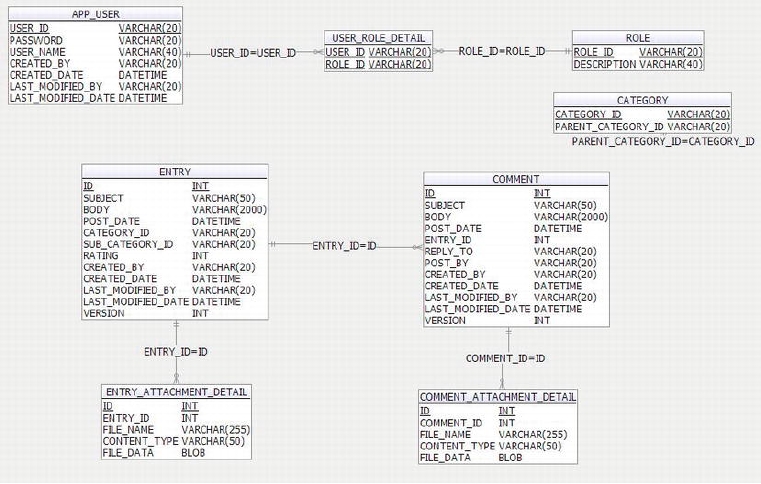After changing the VM argument of the tc Server, the corresponding parameter can be removed
from the web.xml file, and you can try the different combinations of service layer and backend RDBMS by
simply changing the VM argument of the launch configuration of the tc Server.
Application Design
This section gives you an overview on the application design details. In the following sections, the
various design aspects, including the data model, domain object model, UML model for major use cases,
and so on, will be covered.
The Data Model
Let's start with the data model, shown in the entity-relationship diagram in Figure 21-7.
Figure 21-7. The SpringBlog data model
Note that the schema for Spring Batch is not shown in Figure 21-7. Also, the tables for auditing
purposes (the ENTRY_H, COMMENT_H, and REVINFO tables, which will be populated by the Hibernate Envers
module) are not shown here for clarity. For Figure 21-7, the table names and their purposes are listed in
Table 21-1.
Search WWH :


